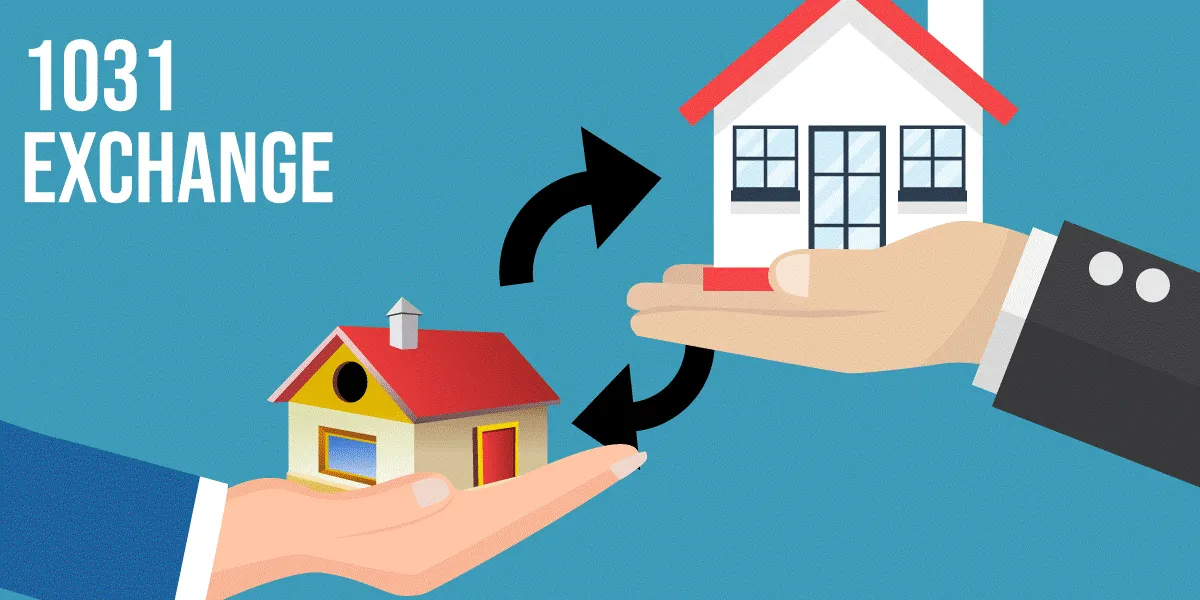WHAT FORE MEMBERS ARE SAYING
" What is currently considered as constituting an alternative or a hedge fund? What do these entities serve as alternatives to, and against what risks do they act as hedges? "
MEMBER LINK
Community | Education | Legacy
FAMILY OFFICE REAL ESTATE INSTITUTE BLOG
The Latest on Family Offices and Real Estate, At the Family Office Real Estate Institute, our commitment to advancing knowledge and expertise in real estate management within family offices extends beyond the classroom.
MEMBER LINK
Community | Education | Legacy

Maximizing Wealth: The Ultimate Guide for 1031 Exchange Options for Family Offices
Making a smart investment is an essential part of financial planning. Capitalizing on compound interest and investing in 1031 exchange options are just two ways to increase returns for family offices on investment properties.
In this guide, we’ll discuss the advantages and disadvantages of these investments and explain why a qualified intermediary is an integral part of 1031 exchange transactions. By the end of this article, you should have a good understanding of how to maximize your families wealth through 1031 exchange transactions.
Real Estate Investors are those who purchase, sell, and manage real estate investments. Many investors are motivated by the potential for high returns on investment, while others may view real estate investments as a way to diversify their portfolio or acquire passive income sources. To succeed in this field, it’s essential that you understand the rules around taxes, financing, and legal matters related to real estate investments.
1031 exchanges are a powerful tax strategy that allows you to exchange one type of property for another, rather than selling the original property. This means that investors can defer capital gains taxes on their investments while simultaneously reinvesting in more productive properties. With this approach, Real Estate Investors can maximize their wealth with minimal tax implications.
A 1031 exchange is a type of business or investment property transaction that allows an investor to defer paying capital gains taxes on the sale of real property by reinvesting the proceeds in another similar business property.
It can be very advantageous for investors because it enables them to shift their funds from one asset class or market sector into another, while still avoiding taxation on any capital appreciation prior to the exchange. It also allows investors to compound their returns through a series of 1031 exchanges over time.
Property Requirements for a 1031 Exchange
In order to qualify for a 1031 exchange, the property being exchanged must meet certain criteria. The property must be held for investment or business use, instead of being used as a primary residence.
Additionally, the like-kind property exchanged must be an income-producing asset such as real estate, tangible personal property, or rental property, not stocks or bonds.
Finally, the 1031 exchange must occur within a certain period of time as outlined by the Internal Revenue Service (IRS).
Step-by-Step Guide to Doing a 1031 Exchange
If you're eligible for a 1031 exchange, the next step is to understand the process. A 1031 exchange is a great option for investors looking to defer capital gains tax and increase their portfolio. Here’s a step-by-step guide to making a 1031 exchange:
Step 1: Identify the property you want to sell.
This property must be of “like-kind,” meaning it must be like another real estate or business asset that you own in terms of nature and character.
Step 2: Identify potential replacement properties within 45 days of selling the original property. You are allowed to identify up to three potential replacement properties and the current market value of all those properties must not exceed 200% of the original property being sold.
Step 3: Negotiate with the buyer for the sale of your original property and specify that it is a 1031 exchange as part of the contract.
The common language used by investors in this situation is “tax-free exchange,” but it is actually the deferral of capital gains tax.
Step 4: Close on the sale of your original property at least two days prior to closing on any replacement property. Then, move forward with closing on one or more of the identified replacement properties within 180 days if the value of the replacement property is less than the relinquished property.
Step 5: Work with an intermediary or Qualified Intermediary (also known as a QI). A Qualified Intermediary will help facilitate the entire process by holding onto your money until you find a suitable replacement property.
They can also provide guidance on how best to structure a 1031 exchange and handle all paperwork associated with it, including filing documents with IRS Form 8824.
Be sure to select an experienced Qualified Intermediary who has extensive knowledge about 1031 exchanges, as well as good references from other investors who have used them in past transactions.
Step 6: Finally, once you have successfully completed all steps in this process and acquired one or more suitable replacement properties, you can file IRS Form 8824 which will allow you to defer taxes owed from selling your original property into future years when you eventually sell these replacement properties (if applicable).
Types of 1031 exchanges:
Simultaneous Exchange:
A simultaneous exchange is one where a taxpayer sells their existing property and purchases a replacement property at the same time.
Deferred Exchange:
A deferred exchange (delayed exchange) is essentially an extension of a simultaneous exchange, allowing extra time for investors to identify and purchase a suitable replacement property.
This type of 1031 Exchange allows up to 180 days from the sale date of the relinquished property to identify potential replacement properties and up to 360 days from that sale date to complete the purchase transaction for all identified properties.
In this type of transaction, interim funding is provided by a Qualified Intermediary which holds onto the funds until it is used by IRS requirements.
Reverse Exchange:
Similar to what its name implies a reverse exchange works in reverse order wherein you purchase your replacement property first before selling your original relinquished property.
This type of transaction requires additional steps and costs since two separate entities must be established – one that holds title on behalf of the taxpayer until they can sell their relinquished property and one that holds title on behalf of the taxpayer until they acquire their desired replacement property.
Additionally, since Section 1031 does not apply upon ownership transfer during a Reverse Exchange, financing may be needed to hold on to both properties simultaneously until both transactions are completed within 180 days following the acquisition of the new replacement asset or 45 days after receipt of proceeds from sale if earlier than 180 days from the acquisition date.
Improvement Exchange
Improvement Exchanges allow taxpayers to improve the quality of their real estate assets by trading for larger or better assets. The Improvement Exchange must still meet all of the 1031 Exchange requirements, but it can be a great way to upgrade a current property.
Power of Compound Interest and 1031 Exchanges
Compound interest is another strategy that can significantly impact your wealth. Compound interest refers to the ability for your investment earnings to generate more earnings over time, resulting in exponential growth.
When combined with a 1031 exchange, the potential for long-term wealth creation can be significant. For example, if you use the proceeds from a 1031 exchange to invest in a high-yield savings account, the interest earned can compound over time, resulting in a greater return on investment.
Benefits of a 1031 Exchange for Family Offices
Family offices can benefit from 1031 exchanges in a number of ways. These exchanges allow family offices to defer capital gains taxes, compound interest and reinvest their capital into properties that better suit their long-term plans. Here are the five key benefits of 1031 exchanges for family offices:
1. Deferral of Capital Gains Taxes:
One of the most attractive benefits of a 1031 exchange is that it allows family offices to defer capital gains taxes. By doing so, family offices can compound their interests and reinvest the additional funds into more profitable real estate investment.
2. Compounding Interest:
By deferring capital gains taxes, family offices are able to compound their interest over time. This compound interest can create a larger fund of capital that can be used to invest in new property or businesses.
3. Investment Options:
1031 exchanges provide family offices with numerous investment options, allowing them to diversify their portfolios and reduce risk. 1031 exchanges give family offices the ability to invest in a variety of assets to give equal or greater value.
4. Tax Deferral:
One of the biggest benefits of 1031 exchanges is that family offices can avoid paying capital gains taxes on their investments, allowing them to keep more money in their pockets and invest it back into the business or properties or vacant land they already own.
5. Compound Interest:
1031 exchanges also provide family offices with compound interest. This means that by reinvesting their money back into the business or property they already own, family offices can generate more returns on their investments over time, increasing their net worth and growing their portfolio.
6. Increased Return On Investment (ROI):
1031 exchanges can also help family offices get higher returns on their investments because they aren't subject to capital gains taxes. This allows family offices to maximize their return on investment (ROI) and make more from each transaction.
These are just some of the ways family offices can benefit from 1031 exchanges. It is important to understand the implications of a 1031 exchange and consult with professionals before engaging in them. With the right knowledge, family offices can ensure that their investments are secure and profitable for years to come.
FAQs
Q1: How does a 1031 Exchange work?
A: A 1031 Exchange, also known as a like-kind exchange, is an IRS-approved method of deferring capital gains tax when selling an investment or business property under internal revenue code 1031. . It involves exchanging the sale proceeds of one property for another of similar value.
The replacement property must be identified within 45 days and purchased within 180 days. This allows investors to reinvest their profits in similar properties while avoiding having to pay taxes on their sales.
Q2: What are the benefits of compound interest?
A: Compound interest is when an investor earns interest on both the principal amount and any previously earned interest, which creates an exponential growth effect. By leveraging this effect, investors can see their money grow over time without making additional contributions. Additionally, compounding interest can help investors reach their financial goals faster due to the increased rate of return on investments over time.
Q3: How does compound interest affect 1031 exchanges?
A: When compound interest is applied to 1031 exchanges, profits from the sale of an investment property are reinvested into another property which can result in larger returns over time as opposed to investing a single lump sum.
Q4. How can 1031 Exchange be used in family offices?
A: 1031 Exchange can be used in family offices to defer capital gains taxes on a real estate investment. This tax tool allows families to exchange properties of equal or higher value and defer the taxable gain from the sale of the original asset. This helps them to reinvest their capital in another property, allowing for long-term growth and better preservation of wealth.
Q5: How can compound interest help real estate investors?
A: Compound interest can help real estate investors by offering them an opportunity to earn a return on their invested funds while also receiving returns on their returns over time.
By reinvesting any profits earned into the property, investors can benefit from the compounding interest which means they will receive an ever-increasing return without having to make additional investments. Compound interest can also play a role in helping investors save for retirement, as well as providing other long-term financial benefits.
Conclusion
By taking advantage of 1031 exchange options, compound interest, and family offices, investors can potentially see significant returns on their investments.
However, it's important to carefully plan and strategize to ensure that the transactions are structured correctly and the investments are sound. By working with a qualified intermediary savvy real estate investors can set themselves up for long-term financial success.
The Family Office Real Estate Institute (“FORE”) or )the “FORE Institute”) is not affiliated in any way with the University of Denver. Nor are any FORE Institute programs or classes affiliated with the University of Denver. The FORE Institute only uses it facilities for its classes, programs, and events. The University of Denver are the various schools within the University do not sponsor or endorse the FORE Institute, any of its information, products, classes, events, or comments. The FORE Institute declares no affiliation, sponsorship, or partnership with the University of Denver. The FORE Institute stands independently as a for-profit business.
© 2025 Family Office Real Estate Institute










